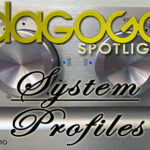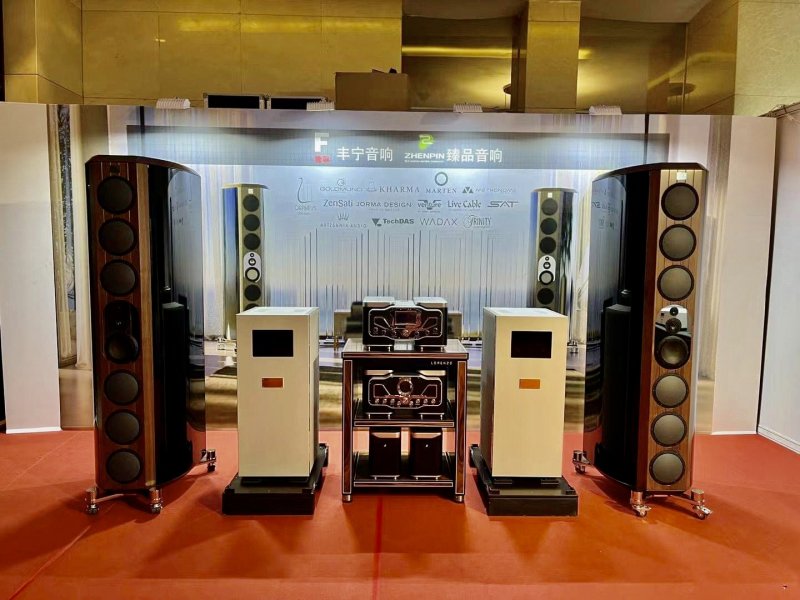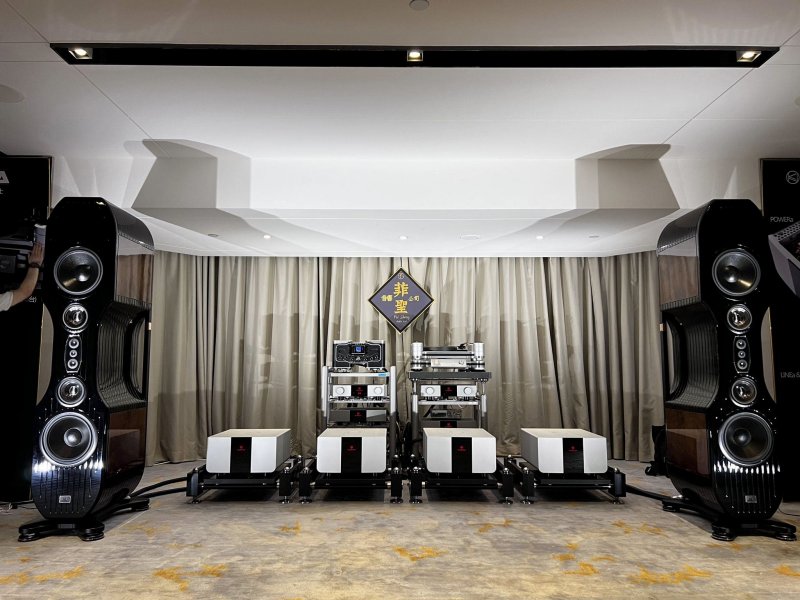WADAX dedicated forum
- Thread starter admin1959
- Start date
You are using an out of date browser. It may not display this or other websites correctly.
You should upgrade or use an alternative browser.
You should upgrade or use an alternative browser.

A Visit to Goodwin’s High End
Introduction We are all no doubt familiar with the reality of dwindling number of brick-and-mortar audio shops. The loss is a real problem for two reasons: (1) it makes it a great deal more difficult to audition equipment that could have potential for purchase; and (2) it makes it harder to...
I believe this comparison between the Wadax reference combo and various other digital sources (including the DCS Vivaldi apex stack) speaks for itself.
Fred Crowder is a very credible listener, and good guy too.
A Visit to Goodwin’s High End
Introduction We are all no doubt familiar with the reality of dwindling number of brick-and-mortar audio shops. The loss is a real problem for two reasons: (1) it makes it a great deal more difficult to audition equipment that could have potential for purchase; and (2) it makes it harder to...www.dagogo.com
I believe this comparison between the Wadax reference combo and various other digital sources (including the DCS Vivaldi apex stack) speaks for itself.
Fred Crowder is a very credible listener, and good guy too.

A Visit to Goodwin’s High End
Introduction We are all no doubt familiar with the reality of dwindling number of brick-and-mortar audio shops. The loss is a real problem for two reasons: (1) it makes it a great deal more difficult to audition equipment that could have potential for purchase; and (2) it makes it harder to...www.dagogo.com
I believe this comparison between the Wadax reference combo and various other digital sources (including the DCS Vivaldi apex stack) speaks for itself.
When is Stereophile reviewing the Wadax Dac/Server combo? Many of us would like to see John Atkinson’s measurements, in particular the Sine wave reconstruction test results.
The question is whether WADAX needs a review. Itis not exactly a product for the masses. My vote is they are not seeking the free publicity, endorsement of a review.
Myself and others are interested to know more about the Digital Signal Processing (DSP) that is going on in these units, if any. Mike claims that this is a “bit-perfect” dac, everything that I have read about this dac leads me to believe otherwise; it would be nice to have this question answered by someone that we all trust, like John Atkinson at Stereophile.
Further to this there is the dichotomy of the Wadax owners claiming that this dac is best thing since sliced bread versus the first-hand accounts from four forum members who have heard it either at shows or in private auditions that walked away not only not impressed but who pointed to some artifacts in their description of its sound quality.
I will also like to point to the fact that we never hear any audio, or through video, of the Wadax units playing, it is almost always a description in typed words. I understand that Mike refuses to post videos of his system playing, but what about AudioCrack and his impressive Tidal speakers and rest of his system, why doesn’t he give us a taste of the Wadax sound for those of us who have not heard them to begin to hear for ourselves if these units really have the potential to live up to the hype?
Let’s have AudioCrack or Stereophinic post a video of their Wadax systems playing back Lori Lieberman’s “Truly” track so that we can all listen to the Wadax magic and compare it to the Michael Fremer reference track.
I think these videos will be insightful. BUT I still would like to see John Atkinson’s assessment of these units.
Last edited:
versus the first hand accounts from four forum members who have heard it . . . at . . . private auditions that walk away not only not impressed but who pointed to some artifacts in the description of its sound quality.
This omits the reports by pk_LA and me from a private, in-home private audition. I wrote:
The Wadax equaled the stunning, ultimate resolution of the Apex, but without the Apex's sonic signature of slight coolness and thinness. The Wadax sounded a little bit warmer, a little bit richer and a little bit more resonant in comparison to the Apex. I think the Wadax exhibited slightly greater decay on acoustic instruments than did the Apex.
Put another way I found the Wadax to be a Pareto Optimal improvement over the Apex: at least one sonic attribute was improved, with no other sonic attribute being degraded. The Wadax sounded less digital and more natural to me than the Apex while, to my ears, maintaining the same resolving power of air and ambience and details and low frequency punch and frequency extension as the Apex. The Wadax’s elimination of the Apex's coolness and dryness did not come at the cost of, or any diminution to, any desireable sonic attribute.
See
Various DAC Audition Impressions
It would be my pleasure as long as I get an invite to hear your new DAC
I think the Wadax exhibited slightly greater decay on acoustic instruments than did the Apex.
Here is a perfect example, I have received private reports that with the Wadax dac/server combo the decays sound “truncated”. It would be nice to judge this for ourselves, during one of my next business trips that takes me to where a Wadax is available at a dealer for audition I will do that but until then a video with the sound of the units might be insightful and telling on this alone, if nothing else.
Here is a perfect example, I have received private reports that with the Wadax dac/server combo the decays sound “truncated”. It would be nice to judge this for ourselves, during one of my next business trips that takes me to where a Wadax is available at a dealer for audition I will do that but until then a video with the sound of the units might be insightful and telling on this alone, if nothing else.
Such nuances like better decay over an AAC/iPhone quality video with an ADC that doesn't cost more than a dollar? Don't be ridiculous.
Such nuances like better decay over an AAC/iPhone quality video with an ADC that doesn't cost more than a dollar? Don't be ridiculous.
Al, maybe if you got a better dac than your 20-bit Schiit dac, and more efficient speakers, your system could resolve those nuances through video, from iPhone ADC IC parts that cost less than a dollar. I understand that not all of us have the same level of high resolving systems, you should work on that, but some of us do. Give HQPLAYER a try and you will hear that it will also improve the level of micro detail retrieval on your system.
Last edited:
Al, maybe is you got a better dac than your 20-bit Schiit dac, and more efficient speakers, your system could resolve those nuances through video, from iPhone ADC IC parts that cost less than a dollar. I understand that not all of us have the same level of high resolving systems, you should work on that, but some of us do. Give HQPLAYER a try and you will hear that it will aLeo improve the level of micro detail retrieval on your system.
This is just too funny, Carlos. How much do you know about my system, and about its resolution? Why do you think you could hear differences over a one-dollar ADC? How efficient do you think my speakers are?
I will be right now making a pdf of this thread page for my archives, for some good laughs. This is priceless.
I think Mike has posted videos on you tube of his system playing. I don't know if it is one for the WADAX.Myself and others are interested to know more about the Digital Signal Processing (DSP) that is going on in these units, if any. Mike claims that this is a “bit-perfect” dac, everything that I have read about this dac leads me to believe otherwise; it would be nice to have this question answered by someone that we all trust, like John Atkinson at Stereophile.
Further to this there is the dichotomy of the Wadax owners claiming that this dac is best thing since sliced bread versus the first-hand accounts from four forum members who have heard it either at shows or in private auditions that walked away not only not impressed but who pointed to some artifacts in their description of its sound quality.
I will also like to point to the fact that we never hear any audio, or through video, of the Wadax units playing, it is almost always a description in typed words. I understand that Mike refuses to post videos of his system playing, but what about AudioCrack and his impressive Tidal speakers and rest of his system, why doesn’t he give us a taste of the Wadax sound for those of us who have not heard them to begin to hear for ourselves if these units really have the potential to live up to the hype?
Let’s have AudioCrack or Stereophinic post a video of their Wadax systems playing back Lori Lieberman’s “Truly” track so that we can all listen to the Wadax magic and compare it to the Michael Fremer reference track.
I think these videos will be insightful. BUT I still would like to see John Atkinson’s assessment of these units.
Certainly a neutral revie with measurements Would be useful to the audiophile community. We know Stereophile is not going to purchase one. hat would be the WADAX motive for submitting it for review? I don't think the current owners would part with their unit.
I would suspect WADAX is concentrating on filling orders for their customers and dealers.
This is just too funny, Carlos. How much do you know about my system, and about its resolution? Why do you think you could hear differences over a one-dollar ADC? How efficient do you think my speakers are?
I will be right now making a pdf of this thread page for my archives, for some good laughs. This is priceless.
Your equipment is listed in your signature for all to see. You laugh, we laugh, but the joke is on you!
Your equipment is listed in your signature for all to see. You laugh, we laugh, but the joke is on you!
Al, maybe if you got a better dac than your 20-bit Schiit dac
As an engineer you should know that a 20-bit resolution at a DAC output is the best that is achievable in practice.
From:

Noise Floor:
Dynamic range is the loudest possible sound and noise floor is the quietest.
We already know that a quiet room has a background noise level of about 30db that we need to rise above. Even if the system is playing above the 30db room noise, the power supply in a DAC will mask the LSB if the peak-to-peak voltage of the noise in the power supply is not less than the voltage of the LSB.
In order for a DAC to actually resolve a specific bit depth the peak-to-peak voltage of the ripple in the power supply has to be lower than the voltage of the LSB. And in order for a DAC to resolve a specific sampling rate the speed of the power supply has to be faster than the sampling frequency.
Based on a 2.5V output of a single-ended DAC (about average), below are the voltages power supply noise must be below in order to hear the LSB:
16-bit LSB noise floor voltage = 76uV
20-bit LSB noise floor voltage = 4.75uV
24-bit LSB noise floor voltage = 0.3uV
For a reference, the common LM317 power regulator, the quality used in most commercial electronics, has about 150uV peak-to-peak noise and the best ultralow-noise power regulators used in the best-of-the-best of audiophile electronics have about 5uV of peak-to-peak noise. So even the 5V output of a balanced DAC could not resolve anything close to the LSB voltage of a 24-bit recording.
Sorry to burst anyone's bubble and contradict the marketing hype, myth, and legend in the audiophile industry, but just because a DAC is capable of decoding 24-bits doesn't mean it is capable of actually resolving that bit-depth in its analog output stage.
According to the experts who manufacture the finest DAC chips, resistors, and power regulators, there is theoretically no way to make electronics that are capable of discerning much greater than a 20-bit resolution (120dB dynamic range). Any company who claims 24-bit resolution from their DAC is simply full of shit. Oh they can decode 24-bits, because 24-bits does exist on the digital side, but the analog output stage in the world's best DACs are not capable of resolving much more than 20-bits of dynamic range.
And don't even get me started on DACs with tube output stages: the lowest noise floor of a tube output stage is about 90dB which means despite whatever a manufacturer may claim no tube DAC can even resolve the dynamic range in a 16-bit recording let alone a 24-bit recording.
(End quote.)
***
But of course you didn't know that, Carlos.
All your self-proclaimed "technical expertise" notwithstanding.
The posturing here is all too funny.
As an engineer you should know that a 20-bit resolution at a DAC output is the best that is achievable in practice.
From:

Noise Floor:
Dynamic range is the loudest possible sound and noise floor is the quietest.
We already know that a quiet room has a background noise level of about 30db that we need to rise above. Even if the system is playing above the 30db room noise, the power supply in a DAC will mask the LSB if the peak-to-peak voltage of the noise in the power supply is not less than the voltage of the LSB.
In order for a DAC to actually resolve a specific bit depth the peak-to-peak voltage of the ripple in the power supply has to be lower than the voltage of the LSB. And in order for a DAC to resolve a specific sampling rate the speed of the power supply has to be faster than the sampling frequency.
Based on a 2.5V output of a single-ended DAC (about average), below are the voltages power supply noise must be below in order to hear the LSB:
16-bit LSB noise floor voltage = 76uV
20-bit LSB noise floor voltage = 4.75uV
24-bit LSB noise floor voltage = 0.3uV
For a reference, the common LM317 power regulator, the quality used in most commercial electronics, has about 150uV peak-to-peak noise and the best ultralow-noise power regulators used in the best-of-the-best of audiophile electronics have about 5uV of peak-to-peak noise. So even the 5V output of a balanced DAC could not resolve anything close to the LSB voltage of a 24-bit recording.
Sorry to burst anyone's bubble and contradict the marketing hype, myth, and legend in the audiophile industry, but just because a DAC is capable of decoding 24-bits doesn't mean it is capable of actually resolving that bit-depth in its analog output stage.
According to the experts who manufacture the finest DAC chips, resistors, and power regulators, there is theoretically no way to make electronics that are capable of discerning much greater than a 20-bit resolution (120dB dynamic range). Any company who claims 24-bit resolution from their DAC is simply full of shit. Oh they can decode 24-bits, because 24-bits does exist on the digital side, but the analog output stage in the world's best DACs are not capable of resolving much more than 20-bits of dynamic range.
And don't even get me started on DACs with tube output stages: the lowest noise floor of a tube output stage is about 90dB which means despite whatever a manufacturer may claim no tube DAC can even resolve the dynamic range in a 16-bit recording let alone a 24-bit recording.
(End quote.)
***
But of course you didn't know that, Carlos.
All your self-proclaimed "technical expertise" notwithstanding.
The posturing here is all too funny.
Al, firsts of all go back and reread my post as I did put a “and” qualifier, as I suspected that you would come back with the “effective” resolution of the PCM dac chips in advance; like a good billiards or chess player you have to be at least 3 moves ahead. Secondly, the dac’s from Daniel Weiss have already broken pass the 20-bit effective resolution and resolve down to 21-bit effective resolution. You have to do your homework to discuss technical matters with me Al, and not just Google and copy and paste some answers.
Al, firsts of all go back and reread my post as I did put a “and” qualifier, as I suspected that you would come back with the “effective” resolution of the PCM dac chips in advance; like a good billiards or chess player you have to be at least 3 moves ahead. Secondly, the dac’s from Daniel Weiss have already broken pass the 20-bit effective resolution and resolve down to 21-bit effective resolution. You have to do your homework to discuss technical matters with me Al, and not just Google and copy and paste some answers.
21-bit, how impressive, wow, I'm so smitten with that huge progress...now, wake me up when it gets to 22 bit, will you?
...and that means that all the other DACs including yours still aren't above 20-bit at the output stage (at best, and with tubes it gets worse as described in the article above).
Carlos, you are the first poster that for just a brief moment I thought about putting on my Ignore list.
But no, you are just too blatantly entertaining!
How could I miss out on that?
21-bit, how impressive, wow, I'm so smitten with that huge progress...now, wake me up when it gets to 22 bit, will you?
...and that means that all the other DACs including yours still aren't above 20-bit at the output stage (at best, and with tubes it gets worse as described in the article above).
Carlos, you are the first poster that for just a brief moment I thought about putting on my Ignore list.
But no, you are just too blatantly entertaining!
How could I miss out on that?
You are obviously stuck in the 80’s and looking at this from a noise floor perspective. Why don’t you read up on Jussi Laako and his wonderful HQPLAYER software and what its algorithms can produce in terms of realized/perceived resolution. For the record, I have four (4) different DSD512 DACs that each uses it’s own unique discrete DSD conversion solution, with no DAC IC inside. Two are solid state units all the way and two use tubes, want to guess which two are the ones that sound the best to my ears?
To get this conversation back to the Wadax dac, it appears that it uses a Texas Instrument Sigma-Delta DAC IC, with a DSP core.
Similar threads
- Replies
- 52
- Views
- 10K
- Replies
- 5
- Views
- 2K
- Replies
- 124
- Views
- 6K
| Steve Williams Site Founder | Site Owner | Administrator | Ron Resnick Site Owner | Administrator | Julian (The Fixer) Website Build | Marketing Managersing |



